The Just Poetry: Writing the worlds we hope for into existence
Valentina Panagiotopoulou, nin* schulz, Jocelyn Page, & Riley Tsang
How can we respond to the climate crisis in a way that creates hope, while also being realistic and truthful as to the current state of this world? Yes, we can campaign, we can advocate, we can lobby, we can protest; but before all this, there is the fundamental need to dream, and share our dreams with each other. In these troubled times characterized by increasing violence, polarization and division, we would like to invite you to join us in Just Poetry. Just Poetry practises writing the worlds we want to experience into existence. Just Poetry intends to disrupt by delight: disrupt what disempowers and divides us and delight in what co-powers and courages us. This is a practice which connects impacted communities around the world and draws upon their diverse beauty, resistance, and visions of climate justice. The Just Poetry map is a living movement of selves, others, and other worlds. It re-writes places as it moves across borders, disciplines, and generations, refusing to stay still or singular. Following desire lines, it loosens and un(t)ravels boundaries, sketching beyond the given lines to make new forms of connection possible. These are not only lines on a page, but opening lines into different ways of relating, remembering, resisting and world-making. Even as we draw strength from one another’s courage and visions of climate justice, we do so in the confrontation of a crisis that reaches into all of our lives. Yes, we are all impacted and affected by the climate crisis, whether it be through disasters on our doorsteps, anxiety of unknown futures, pain for our loved ones or their loved ones, and losses in the past or yet to come. It’s easy for this grief to become a totalizing global narrative—that we are only victims, and that the disaster is inevitable. As such, it’s also easy for us to feel increasingly isolated in the face of these disasters, to see disasters unendingly take place on our phones, on the news, outside our window. In the face of this unending and inundating stream of horror, sometimes the only response that feels feasible is to feign ignorance, pretend that everything is normal until it crumbles in front of us. But this also enacts a heavy toll on our hearts, as it forces us to live in dissonance with the reality of the world in front of us, and this is not freedom. “Dreaming of the sea they had never seen”, poet Merlie M. Alunan writes in THE RIVER NYMPH’S LAST THREE WORDS. Dreaming of ways to be. This is what artivism projects like Just Poetry offer: a place for us to cultivate our dreams into seeds of hope that guide our activism and movements. Art and poetry are methods as old as humanity itself, methods which allow us to transform the lived emotions of life itself into forms of power that others can understand. Within the climate justice movement, poems like Hurricane Dorian by Asha Abdullahi name a truth about life within the climate crisis that resonate with us — this truth, while unique to the author’s lived experience, expands in such a way that people on the other side of the world are inspired to share their truth—including seemingly contradictory emotions like fear, pain, determination, and hope—in response. As the Just Poetry map demonstrates, when we recognize the power of others’ truths and share our own in response, this action slowly weaves together new narratives about who we are in relation to this climate disaster. We are not simply victims; rather, we have the power to face and embrace our current collective state and trajectory within this climate crisis, and guided by our care for another, can name new directions for us to turn towards. Poetry is true power. It centres the self and involves our bodies – our mind, heart, voice, breath. As such, it marks and measures our place on earth, but also our time here – the years, days, seconds. As an extension of our selves, wholly creative and inherently future-facing (even if written about the past), poetry reaches for others – as readers, thinkers, and conspirators in this thing called living. In a world where we are increasingly made to feel powerless, poetry dares to coax attention away from profit, to evoke intentional, beautiful silence as a legitimate response to greed, and celebrate the lyric as a challenge to that which is for sale. Just Poetry invites you to practice with us. It is a home for hope, a location for our longings and a chorus of care. Together, we rewrite what power means, understanding it not just in numbers, but in belonging. We locate justice in everyday actions that collectively create the worlds we want to live in. We connect with each other in the midst of current calamities, drawing on our past to imagine our futures and rise together in community and courage. Those are the directions in which we continue to campaign, organize, lobby, advocate, resist and care. Share your poetry for climate action with us and tag #GreenpeaceJustPoetry. Valentina Panagiotopoulou is the Global Project Lead for the Climate Justice and Liability Campaign nin* schulz is a Senior Strategist & Portfolio Manager for Climate & Energy at Greenpeace International Jocelyn Page is a poet from Connecticut, USA, living in London. She teaches English and Creative Writing at Goldsmiths College and the University of London Worldwide. Riley Tsang is a Global Engagement Specialist for the Climate Justice and Liability Campaign at Greenpeace International Texte intégral (1747 mots)


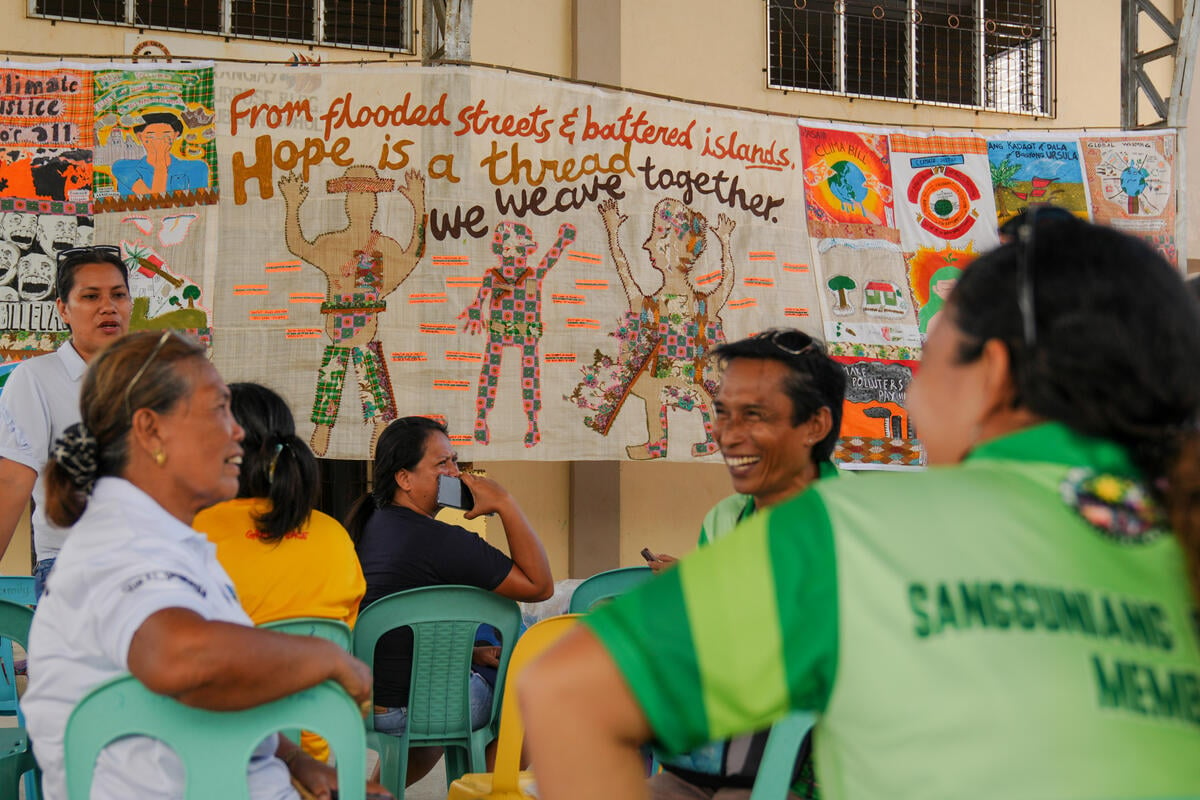
Greenpeace Pictures of the Week
Greenpeace International
Nickel mining at a UNESCO site, sunshine in Paris, and green reconstruction in Ukraine, here are a few highlights of Greenpeace work around the world over the past week. Greenpeace has been a pioneer of photo activism for more than 50 years, and remains committed to bearing witness and exposing environmental injustice through the images we capture. To see more Greenpeace photos and videos, visit our Media Library. Texte intégral (1734 mots)
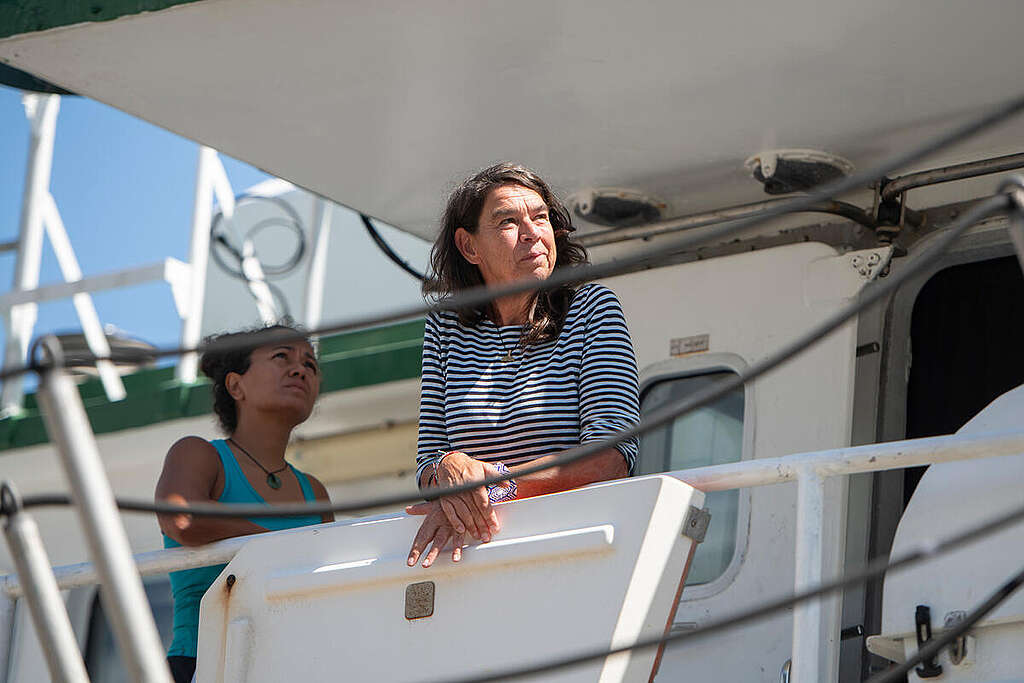
 Brazil – Rainbow Warrior captain Hettie Geenen, pictured on the deck the ship with Rosy, on-board Radio Operator, as the vessel arrives in Rio de Janeiro for a series of climate justice activities in Brazilian cities and coastal areas.
Brazil – Rainbow Warrior captain Hettie Geenen, pictured on the deck the ship with Rosy, on-board Radio Operator, as the vessel arrives in Rio de Janeiro for a series of climate justice activities in Brazilian cities and coastal areas.
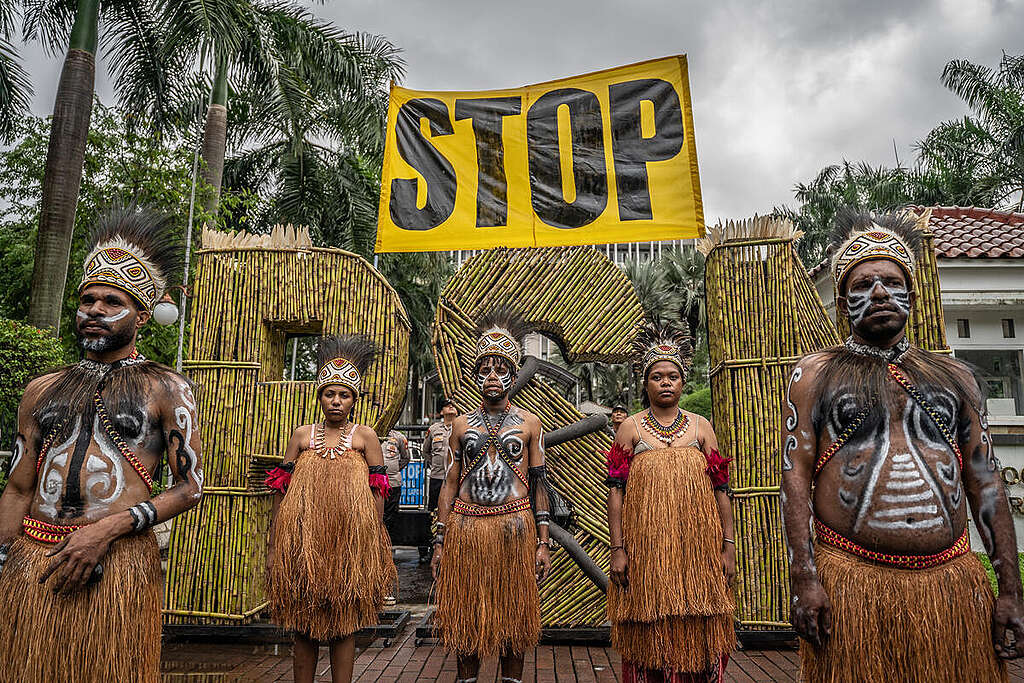
 Indonesia – Greenpeace Indonesia holds a theatrical action to protest the National Strategic Project (PSN) of Sugarcane Merauke in front of the Coordinating Ministry for Economic Affairs office in Jakarta. Greenpeace condemns the massive deforestation that has occurred in Merauke, caused by this sugarcane project. At least 560,000 hectares of forest have been destroyed in South Papua.
Indonesia – Greenpeace Indonesia holds a theatrical action to protest the National Strategic Project (PSN) of Sugarcane Merauke in front of the Coordinating Ministry for Economic Affairs office in Jakarta. Greenpeace condemns the massive deforestation that has occurred in Merauke, caused by this sugarcane project. At least 560,000 hectares of forest have been destroyed in South Papua.
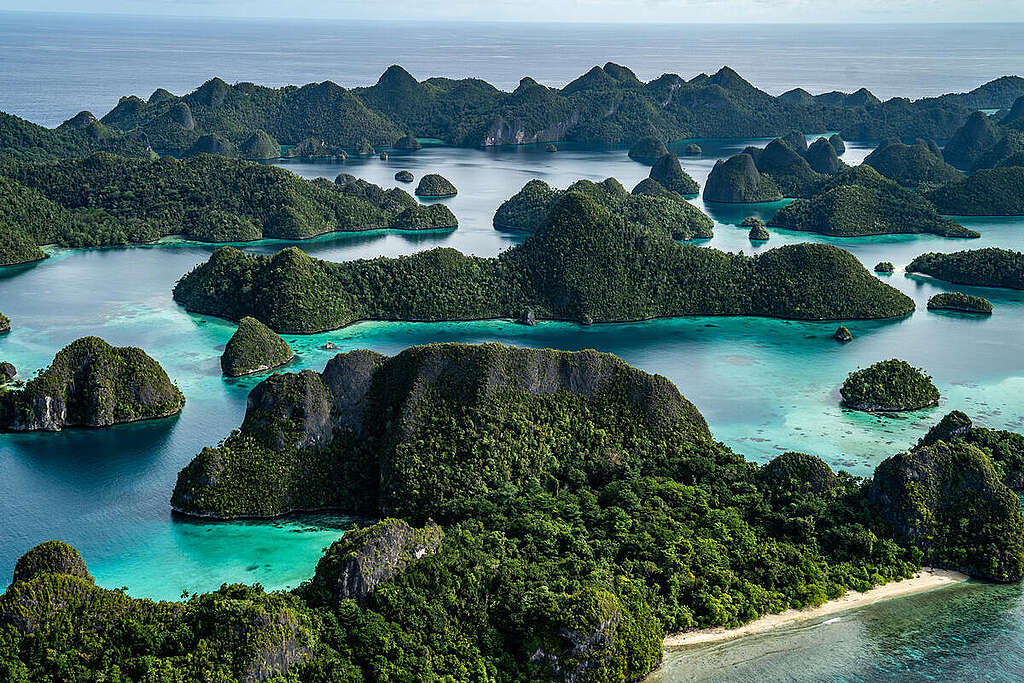
 Indonesia – An aerial photo of the iconic Wayag Island in Raja Ampat islands in Southwest Papua. The Wayag Island is primarily threatened by nickel mining activities in nearby areas and the associated social conflict. Mining activities cause deforestation, increased sedimentation that smothers coral reefs, and the potential for chemical pollution, which can cause irreversible damage to the region’s rich marine biodiversity, a UNESCO Global Geopark area.
Indonesia – An aerial photo of the iconic Wayag Island in Raja Ampat islands in Southwest Papua. The Wayag Island is primarily threatened by nickel mining activities in nearby areas and the associated social conflict. Mining activities cause deforestation, increased sedimentation that smothers coral reefs, and the potential for chemical pollution, which can cause irreversible damage to the region’s rich marine biodiversity, a UNESCO Global Geopark area.

 France – On the tenth anniversary of the Paris Agreement, activists from Action non-violente COP21, Action Justice Climat and Greenpeace France poured orange paint on the Place de l’Etoile to draw attention to the persistent invisibility of the populations most affected by the climate crisis.
France – On the tenth anniversary of the Paris Agreement, activists from Action non-violente COP21, Action Justice Climat and Greenpeace France poured orange paint on the Place de l’Etoile to draw attention to the persistent invisibility of the populations most affected by the climate crisis.

 Ukraine – Together with the city of Trostjanez and the Green Planet Energy eco-energy cooperative, Greenpeace has completed a model project for sustainable and independent heat supply in Ukraine. An apartment building in the eastern Ukrainian town of Trostjanez, which was severely damaged during the Russian occupation in 2022, has been completely renovated and equipped with a modern heating system using geothermal energy, heat pumps and solar power. The pilot project for sustainable reconstruction shows how European aid can make heat supply in Ukraine more secure, affordable and independent with future-oriented technology
Ukraine – Together with the city of Trostjanez and the Green Planet Energy eco-energy cooperative, Greenpeace has completed a model project for sustainable and independent heat supply in Ukraine. An apartment building in the eastern Ukrainian town of Trostjanez, which was severely damaged during the Russian occupation in 2022, has been completely renovated and equipped with a modern heating system using geothermal energy, heat pumps and solar power. The pilot project for sustainable reconstruction shows how European aid can make heat supply in Ukraine more secure, affordable and independent with future-oriented technology
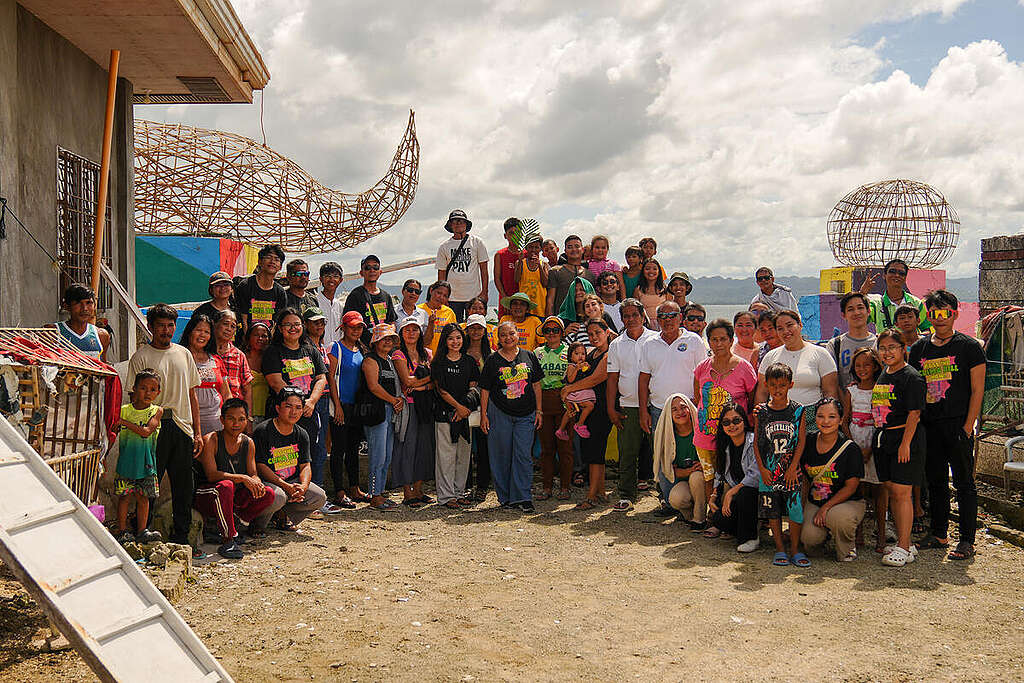
 Philippines – Community-led art installation across Ubay Island, Bohol to commemorate the fourth anniversary of Super Typhoon Odette which hit the Philippines on December 16, 2021.
Philippines – Community-led art installation across Ubay Island, Bohol to commemorate the fourth anniversary of Super Typhoon Odette which hit the Philippines on December 16, 2021.
The collection of artworks, titled Hagit sa Kaugma-on (Challenge of the Future), was created by residents who lived through the storm, with artist Leeroy New and Greenpeace Philippines. Made from local bamboo and items damaged by the typhoon, the pieces placed throughout the island tell stories of loss, survival, and the growing call for climate accountability. Many of those who helped create the artworks are also part of a legal case filed in the UK against oil giant Shell.

 U.K.- Protesters held a vigil outside Shell Centre in London to mark the anniversary of Typhoon Odette, which killed hundreds of people and destroyed more than a million homes in the Philippines.
U.K.- Protesters held a vigil outside Shell Centre in London to mark the anniversary of Typhoon Odette, which killed hundreds of people and destroyed more than a million homes in the Philippines.
Top 5 questions we answered in 2025
Yousra Rebbani and Mehdi Leman
From “Why are you making statements on Gaza?” to “Why are you campaigning to tax the super-rich and against private jets” to questions about Greenpeace’s stance on meat and dairy consumption and “overpopulation” and the persistent question of what individual actions and habits can help combat climate change and biodiversity collapse. These are the top 5 questions Greenpeace frequently received in social media comments in 2025 — and their answers. We stand against war crimes, ‘manmade’ famine, ethnic cleansing, genocide and ecocide — defending human rights and protecting the conditions for all life go hand in hand. Founded 50 years ago to stop the testing of nuclear weapons, the name “Greenpeace” represented the intersection between peace and ecology movements, and the vision of a green, just and joyful future for all life on Earth. It is part of our mission to “promote peace, global disarmament and non-violence.” We understand that we are a part of, not apart from, nature. What we do to nature we do to ourselves and what we do to each other we do to nature. We pursue peace to protect people and our shared home. A peaceful world is one built on cooperation, community and connectivity, where we can all enjoy our right to a safe and healthy environment and live life free from violence and fear. Greenpeace has always, and will remain, an organisation that campaigns for peace. We know the environmental impact of war is catastrophic, with the collapse of infrastructure, widespread, long-term degradation of ecosystems and profound risks to human health. A toll that persists for generations after the conflict ends, leaving a legacy of contaminated landscapes and exposed communities. In Gaza, Israeli airstrikes have set fuel depots ablaze and destroyed sanitation infrastructure – dumping raw sewage into the sea and polluting local water sources. Bombing and explosions have flattened farmland and left rubble, toxic dust and hazardous debris across entire neighbourhoods. A catastrophe for human health and the environment, carbon emissions from the first 15 months of Israel’s war on Gaza exceed the planet-heating emissions of more than 100 individual countries, exacerbating the global climate emergency on top of the huge civilian death toll. Power struggles over energy resources have been a conspicuous factor in fossil fuelled wars from Iraq to Sudan and Ukraine. Greenpeace will continue to speak out on the cost of such conflicts. We call for urgent action to protect human rights, people’s health, the environment, and the climate. And to invest in safe, secure renewable energy systems for all. We believe in a world where everyone is safe, secure and free to thrive on a green, liveable planet. A world where every family can put food on the table and look ahead to a hopeful future. But we live in a world where a minority – the richest 1% – are responsible for more emissions than 66% of the world’s population, polluting and plundering the planet for their own gain. According to Oxfam, these wealthiest 1% own more wealth than 95% of the world’s population but reportedly contribute just 0.3% in taxes. Instead of hoarding wealth, trashing the planet and destroying nature, if the super-rich paid their fair share in taxes, there would be enough money for a green and fair world for all. The money for health, education, climate action, and nature protection is there, it’s just in the wrong hands. Which is why we urge governments to tax the super-rich and support fair global tax rules to protect the future of people and the planet and reduce inequalities. Together, let’s urge governments to tax the super-rich and fund a green and fair future. Why ban private jets? They are the epitome of said inequalities. They are used by a tiny ultra-wealthy minority, while the environmental costs affect the entire planet, especially the most vulnerable communities. Private jets are the most polluting form of transport. They have a disproportionate carbon footprint. A private jet flight causes about 10 times more CO2 emissions per person than a regular commercial flight and 50 times more than a train. The excessive, non-essential emissions contribute to the accelerating climate crisis. Private jets are wasteful and unsustainable. They are inherently inefficient, typically carrying a small number of passengers while consuming vast amounts of fuel. Flying short distances, which many private flights do, is particularly fuel-inefficient. Banning private jets would be a powerful demonstration of commitment to tackling the climate crisis and sends a clear message that “luxury emissions” are no longer acceptable. Only 1% of people are responsible for half of global aviation emissions, the vast majority of people (80%) have actually never flown. The aviation industry invests in greenwashing and false solutions to appear as a beacon of climate protection but the truth is flying remains the most climate-damaging means of transportation per passenger and per kilometre. While air travel benefits from unfair tax privileges, train travel is penalised and this needs to change. This is an issue of social and climate justice, as the polluting lifestyle of the super-rich and the footprint of their destructive investments contrasts starkly with the reality of billions who have minimal carbon footprints but face severe climate impacts. ‘Overpopulation’ is a distracting myth that takes the focus away from the real, solvable problem: Overconsumption. Some people suggest that the best (or only) way to reduce the damage humans do to the environment is to reduce the human population. But the evidence shows that wasteful overconsumption – driven mostly by the richest people and societies – causes far more damage. From a moral and practical perspective, it’s also a much easier problem to solve. Many of the people who raise concerns about population are well-intentioned. But the idea that ‘overpopulation’ is causing climate change is inaccurate, and unfairly places blame on poorer societies in the Global South. These societies have faster-growing populations, but much lower consumption. This argument also diverts attention from the much greater responsibility of richer societies in the Global North to reduce their emissions. Because most people in the Global South are people of colour, there is a racial justice dimension to the population control argument. Regardless of the intention, it can reinforce racist attitudes and feed long-standing racial inequality and injustice. “Population control” is not a solution to the climate and nature crisis. Campaigning for “population control”, while doing little to propose reductions in consumption in the richest countries and address the extreme inequality crisis, would be unfair and ineffective. Instead, Greenpeace campaigns to stop the overconsumption of plastic, fossil fuels, and industrial meat, and we fight for a fair and fossil free global economy. You can’t make every change, and that’s okay. Focus on what you can do while remembering that governments must rein in polluting corporations for real change. The most impactful actions include: Ultimately, individual actions matter, but the biggest impact comes from joining forces through online mobilisations (e.g. petitions), protests, community organising, and voting to pressure leaders and hold corporations accountable. Greenpeace has been exposing the links between industrial meat and dairy production and deforestation for more than 20 years, beginning with the Eating Up the Amazon report in 2006. It revealed that about 80% of the world’s soya harvest is used for animal feed and that this demand was driving large-scale destruction of the Amazon rainforest. Since then, Greenpeace organisations around the world have continued to investigate and expose the harmful practices of meat and dairy giants such as JBS, Fonterra, Arla and Danish Crown, companies repeatedly linked to deforestation, land grabbing and other environmental damage. Industrial meat and dairy are among the main drivers of climate breakdown and deforestation. To protect people and the planet, we need to stop the expansion of these industries, end destructive factory farming and support farmers through a fair transition toward more sustainable food systems. Our fight is against polluting corporations and broken policies, not individuals. At the same time, we cannot ignore the consumption side. Reducing meat intake or shifting towards plant-based diets is one of the most effective ways to act for the climate, forests and biodiversity. The science is clear: without reducing production and consumption, the world cannot stay within the 1.5 °C climate limit. Greenpeace analysis from 2020 found that Europeans eat about twice as much meat as the global average and almost three times as much dairy. To tackle farming’s contribution to climate breakdown, EU meat consumption would need to fall by around 70% by 2030 and 80% by 2050. The Less is More report shows that eating less than 300 grams of meat per week and shifting to more plant-based foods could save millions of lives each year while significantly cutting emissions. Greenpeace calls for global meat and dairy production and consumption to be cut in half by 2050 to keep the Paris Agreement within reach. Learn more about the intensive livestock industry, and how their actions are cooking the planet. It’s time to cut through corporate lies, cut agriculture emissions and shift towards sustainable agroecology. Yousra Rebbani and Mehdi Leman are content editors for Greenpeace International, based in Hungary and France. Texte intégral (4417 mots)
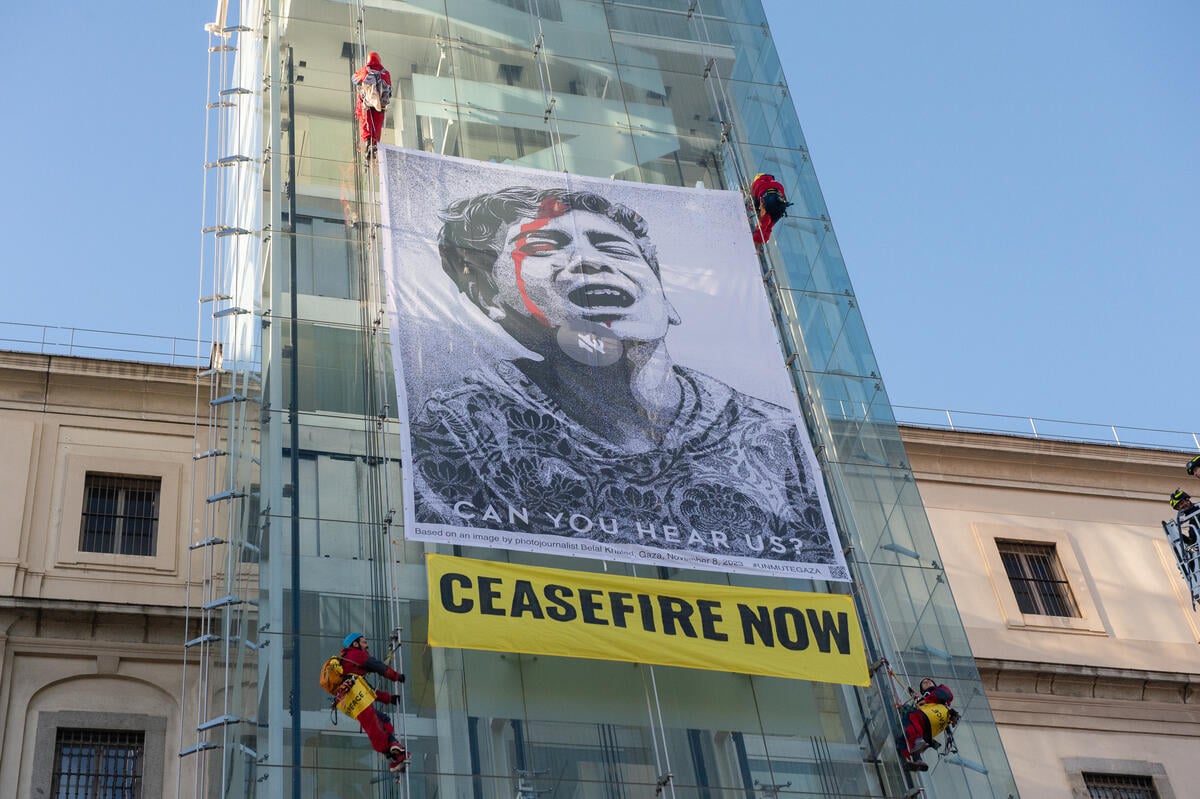
1. Greenpeace, why are you commenting on wars/conflicts like Gaza? Stay in your lane!

2. Why are you campaigning for taxing the super-rich and banning private jets?

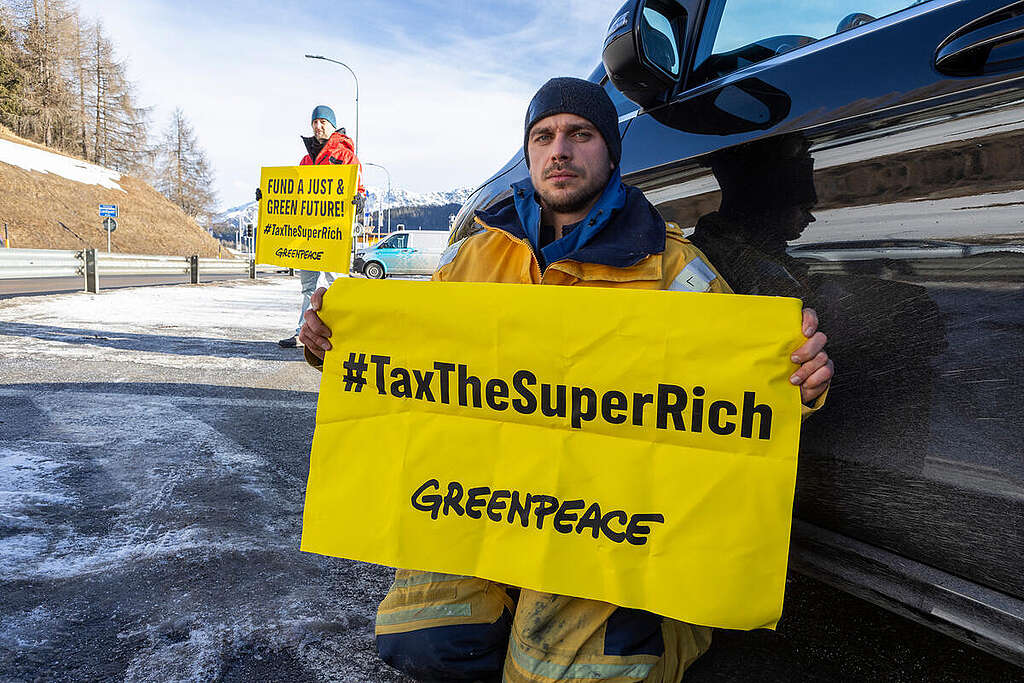

3. Why are you not saying anything on ‘overpopulation’?
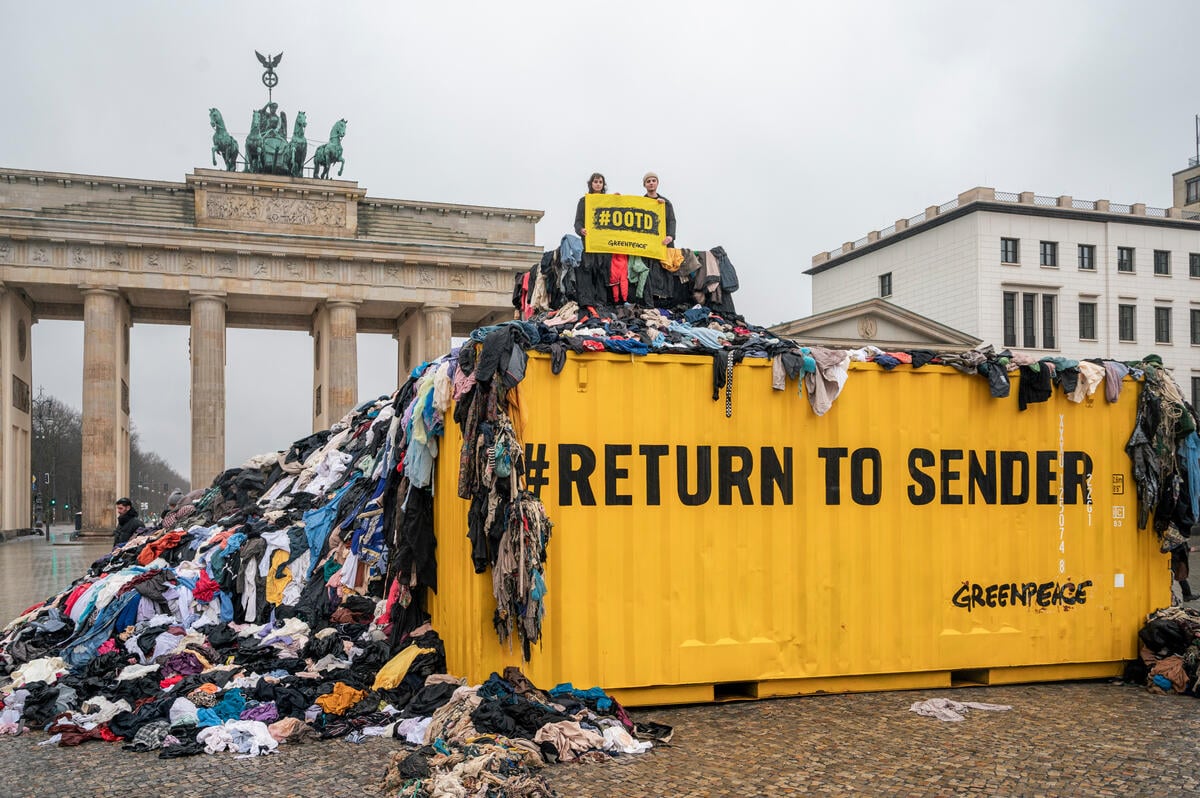
4. What are the most impactful things I can do to combat climate change and biodiversity collapse?


5. What’s Greenpeace’s stance on meat and dairy consumption?



Hope comes alive when we take action: 8 Good News stories 2025
Caroline Wagner, Francesca Cresta and Zinzi van der Aar
We are approaching the end of 2025 – once a distant marker used for environmental milestones and future promises of a cleaner, greener world to come. Now we are ten years after the Paris Agreement for climate action and fresh from concluding COP30 in Brazil. We’ve reached a moment that feels both urgent and full of possibility, but it still feels as if we are stuck. And certainly not making progress fast enough with the Global Goals for sustainable development, agreed by all 193 United Nations members back in 2015. So much can seem wrong in this world right now – geopolitical turmoil, unachieved climate targets, and future goals that seem unrealistic. The forces driving destruction are continuing to push the world toward crisis. From fossil fuel corporations, industrial agriculture and extractive industries, to big tech and political actors who attack accountability and sow division. Yet one thing remains certain: in troubling times, hope is an act of resistance. At Greenpeace, we know that collective action – across borders and generations – fuels hope. As part of a rising tide of people demanding dignity, justice, safety, social and ecological renewal, we are hopeful. Despite the setbacks and often overwhelming odds, so much good is still happening. Change is unfolding – sometimes quietly, sometimes boldly – driven by people and their communities, with courage and care for each other and the planet. Negativity is easy to see and feel, but positivity is powerful, and it’s what keeps us moving forward and keeps the momentum towards a brighter future for us all. As the calendar year comes to a close, it offers a moment to reflect back on the year we have just lived – and for some of us just survived – and perhaps we can even take a moment to be grateful for the progress people-power has made. That’s why we are here to share with you some of our most significant victories of the year – wins that prove progress is real, hope is justified, and action matters. The Global Ocean Treaty reached its 60th ratification in September 2025, clearing the way for this historic agreement to enter into force in January. With only 0.9% of the High Seas currently fully or highly protected, the Treaty is crucial to expanding protection, establishing sanctuaries that help mitigate the climate crisis, and safeguarding food security for the billions who depend on ocean resources. It is a landmark moment for protecting the ocean, and proof that countries can come together to protect our blue planet. The era of exploitation and destruction must end, and the Global Ocean Treaty is the tool to make that happen. This is a massive achievement – decades in the making – for all the activists, supporters and allies who raised their voices for ocean protection. Campaigners, coastal communities, small-scale fishers, scientists, and ocean lovers everywhere can hold on to this moment as proof that when millions of us demand change, we can achieve what once seemed like a distant dream. But the fight for the protection of our Ocean is far from over. Scientists are clear that we need to protect at least 30% of our ocean by 2030. Governments around the world must use this time to ensure the first historic ‘Ocean COP’, set for 2026 becomes a turning point, and start to develop plans for the first-ever sanctuaries under the new Treaty. Our ocean can’t wait, and neither can we. In June the Indonesian government announced it would revoke four out of five active nickel mining licences in Raja Ampat, West Papua, following growing scrutiny of mining activity in the archipelago. Tens of thousands of people signed and posted under the banner of #SaveRajaAmpat in just a matter of days. The decision came the same day Greenpeace Indonesia released its Paradise Lost? investigation, which documented the scale of the threat nickel mining poses to Raja Ampat – often referred to as “The Last Paradise on Earth”. The report identified 16 nickel mining licences. Twelve of the licences are located within the UNESCO-listed Raja Ampat Global Geopark, and four active licences were on small islands where mining should be prohibited under Indonesian law. While the government’s announcement represents a significant development, it does not yet secure full protection for Raja Ampat. The permit for the largest mine remains in place, and past experience shows revoked licences can be reinstated. Together with local and Indigenous Peoples in West Papua, Greenpeace Indonesia is calling for the permanent cancellation of all mining permits, the prevention of nickel and smelter development linked to Raja Ampat, and robust legal safeguards to ensure mining cannot return. This decision demonstrates the impact of sustained investigation, Indigenous Peoples’ resistance and public pressure. It marks an important step toward lasting protection for one of the world’s most biodiverse regions. After 6 years of campaigning led by 27 law students in the Pacific Islands, the International Court of Justice (ICJ) issued a landmark Advisory Opinion that strengthens states’ obligations in the climate emergency beyond the Paris Agreement in July. It confirms that all countries have duties to prevent significant environmental harm and that states must regulate businesses for the damage caused by their emissions, no matter where that harm occurs. The court also affirmed that the right to a clean, healthy and sustainable environment is fundamental to all other human rights. This Advisory Opinion signals a new era of global climate justice. By clearly defining states’ international climate duties and the consequences for breaching them, the ICJ opens the door to new cases that could bring justice to communities suffering the worst impacts of a crisis they did little to cause. The court’s message is unequivocal: fossil fuel production, consumption, and the granting of licenses and subsidies may violate international law, and major polluters must stop emitting and pay for the damage they have inflicted. In October, a Paris court issued a significant ruling against TotalEnergies’ misleading advertising. The case, brought by Friends of the Earth France, Greenpeace France, and Notre Affaire à Tous with support from ClientEarth, challenged the company’s attempts to present itself as a climate-responsible actor while continuing to expand its fossil fuel activities. TotalEnergies claimed in its ads that it placed “climate at the heart of its strategy” and aimed to deliver “cleaner, safer and more affordable energy,” highlighting its 2050 net-zero ambition. The Court found these claims likely to mislead consumers, noting that the company is simultaneously increasing its production and investment in oil and gas – a trajectory incompatible with scientific recommendations and the Paris Agreement, which call for an immediate reduction in fossil fuel production. This judgment is the first to recognise the oil industry’s net-zero messaging as greenwashing. It marks an important step towards holding major polluters accountable for misleading the public and delaying real climate action. In November, a Kenyan court delivered a groundbreaking judgment declaring that seed sharing among farmers is legal, marking a significant victory for smallholder farmers and allies defending food sovereignty in Africa. For years, Kenyan farmers have lived under the shadow of a law that threatened jail terms of up to 2 years and a fine of 1 million KES (about 7,800 USD) for selling or exchanging unregistered seeds, effectively handing control of the country’s food system to multinational corporations. This landmark decision protects traditional farming practices and the rights of small-scale farmers to save, exchange, and plant seeds freely, challenging corporate control over agricultural resources. The verdict reinforces community-based seed systems that have sustained food security for generations, setting a powerful precedent for defending farmers’ rights and biodiversity against restrictive seed laws that favour large agrochemical corporations. After months of public pressure, the Banco do Brasil updated its environmental and social rules for rural credit. The bank will now block loans to any rural property with environmental embargoes, require proof that any deforestation was legal, and check state embargo lists even if they are not on the federal system. These changes answer key demands from Greenpeace Brasil, which showed how weak rules were allowing public money to fund deforestation, fires and other environmental damage. The update is an important step, but more needs to be done. The bank still doesn’t fully prevent credit for farms that use illegal fires, and it has not required clear traceability in cattle financing – one of the main drivers of deforestation. Even so, the pressure from society, investigations and public actions has already brought real results and sent a strong message: public money cannot continue to support activities that destroy forests. Take action now to protect the Amazon and all the world’s forests. The European Free Trade Association (EFTA) Court confirmed in May that Norway must count all climate impacts when approving new oil and gas projects – not only the emissions from drilling, but also the much larger emissions released when the oil and gas are burned anywhere in the world. This supported the case brought by Greenpeace Nordic and Natur og Ungdom (Young Friends of the Earth Norway), and showed that the Norwegian government was wrong to ignore these “Scope III” emissions, which make up about 95% of a project’s climate damage. The decision has major consequences for all future fossil fuel approvals in Norway and across Europe. Courts are recognising that protecting people from climate harm is a legal duty, not an option. The ruling follows similar decisions in the United Kingdom, the United States and Guyana, and strengthened an earlier win in the Oslo District Court, where approval of three North Sea oil and gas projects was found invalid for failing to assess these emissions. The Norwegian government appealed the earlier win, but in November the Borgarting Court of Appeal once again ruled in our favour, reaffirming what the Oslo District Court, the EFTA Court and the European Court of Human Rights, had already made clear – governments must assess the full climate impacts of oil and gas projects, including emissions caused by burning the fuels abroad. This is a huge victory for everyone who is fighting for a safer future, it proves that our struggle for climate justice has real force. In November, the United Kingdom (UK) government slammed the door on new oil and gas exploration in the North Sea. This makes Britain the largest economy to end new fossil fuel exploration. After nearly three decades of campaigning – from activists clinging to rigs in Arctic storms to lawyers dismantling government decisions piece by piece – this is a historic moment for the climate movement and a win that once seemed impossible. Greenpeace UK first campaigned on the issue of oil exploration licensing in 1997! This doesn’t mean all oil and gas production will end immediately. The end of exploration licenses means companies can no longer get permission to search for new oil and gas reserves in previously untapped areas. But it’s still a major change. Every new field discovered locks the UK into decades more drilling, more burning, more damage. This decision cuts that cycle off at the source. So existing UK North Sea fields will produce until they run out, or until production stops for some other reason. But without new discoveries, production will steadily decline until it reaches zero. The North Sea fossil fuel era has a finish line now, and that’s exactly what the climate needs. More countries must follow to ensure a just transition to clean energy, and fast. These are only some of the victories that we want to remember, cherish and bring with us as the year comes to a close. But there are many more that we have not mentioned here, just as important, that show us that the environmental movement, united, can in fact bring about true change. It’s not easy, sometimes it is not apparent, but we are doing it every day. So as this year comes to an end, we hope that we can fuel you with hope and happiness, rather than doom and gloom. We’ll continue our actions next year and we certainly hope that you will join us. Together we can make a change. And if ever you feel overwhelmed by the enormity of the world that we live in today, know that you have a choice. You have a choice to either feed the negativity that weighs you down, or you can choose to celebrate the good and surround yourself with tangible actions and progress, no matter how small. A quiet moment of reflection, a deep breath and meditation may support you too if you are struggling with climate anxiety. Start a conversation about why/how we need to resist alongside people in your community. Caroline Wagner is Programme Support Manager for the European Collaboration at Greenpeace Germany. Francesca Cresta is Executive and Governance Assistant at Greenpeace Italy. Zinzi van der Aar is a Writer/Editor at Greenpeace Netherlands. Texte intégral (4939 mots)
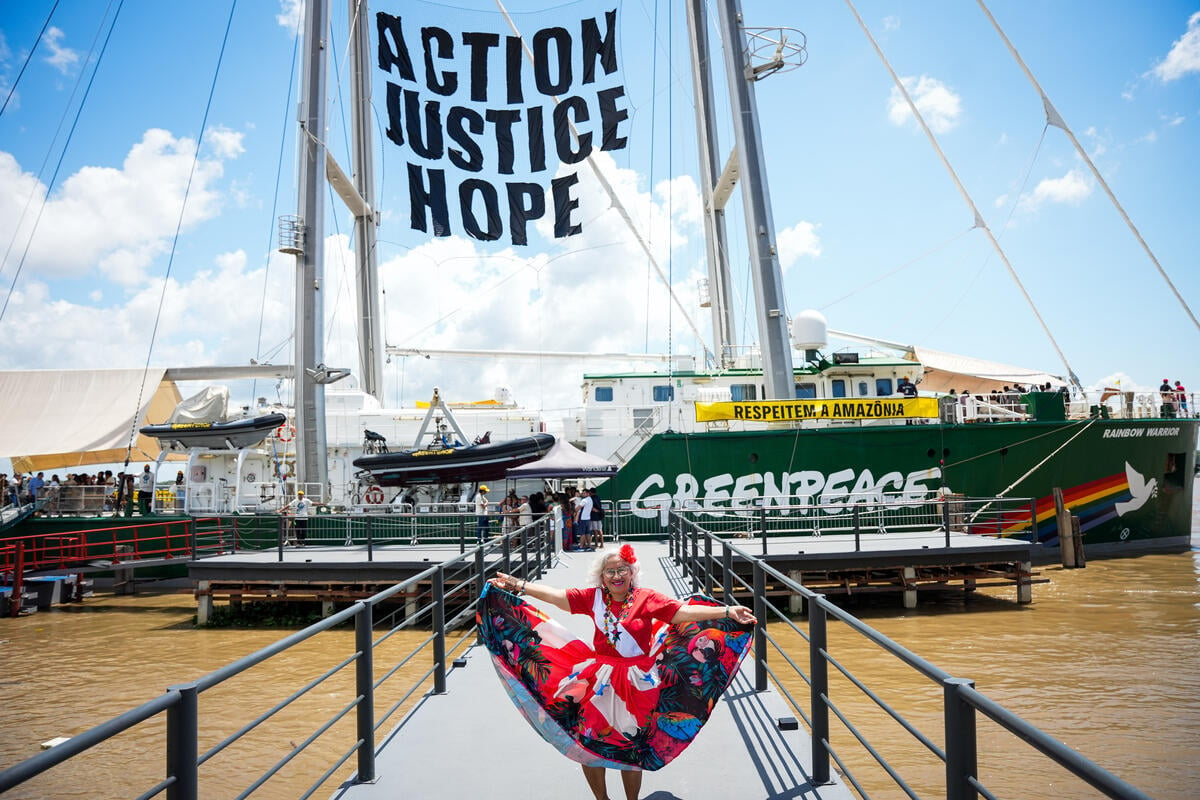
1. Global Ocean Treaty set to come into force
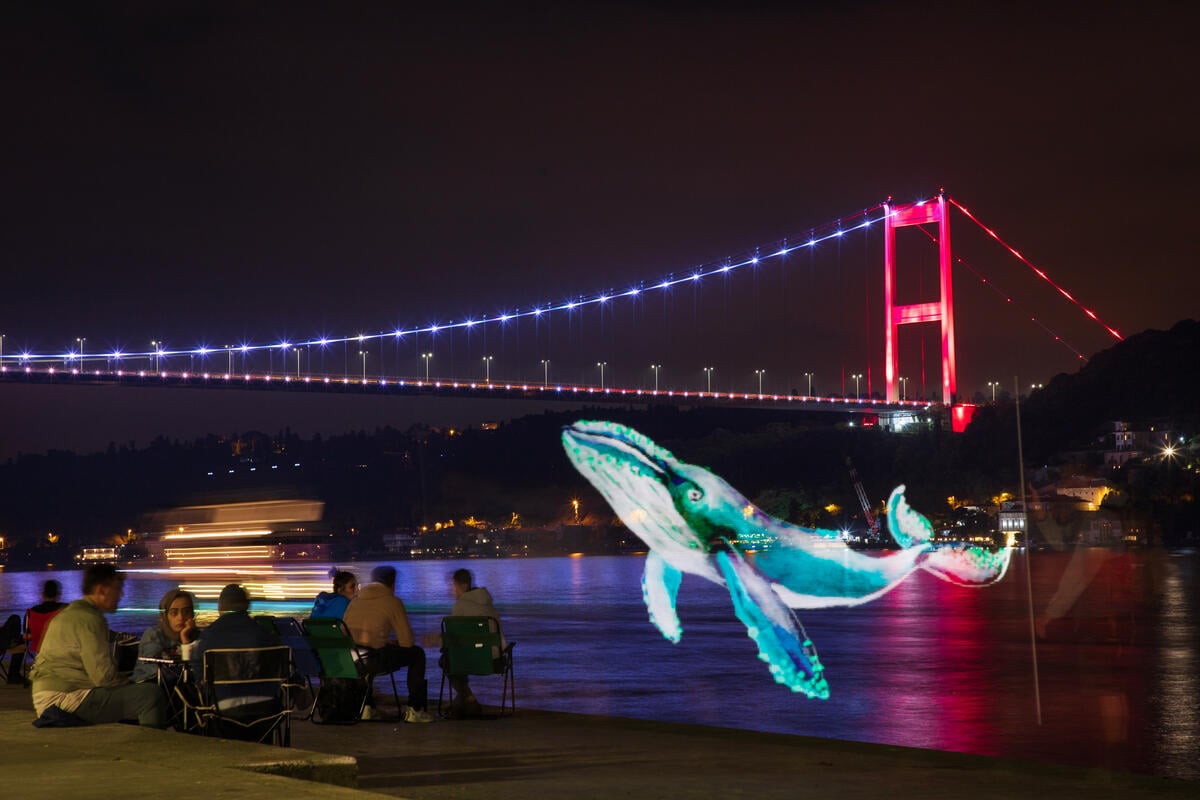
2. Raja Ampat: Victory for ‘The Last Paradise on Earth’
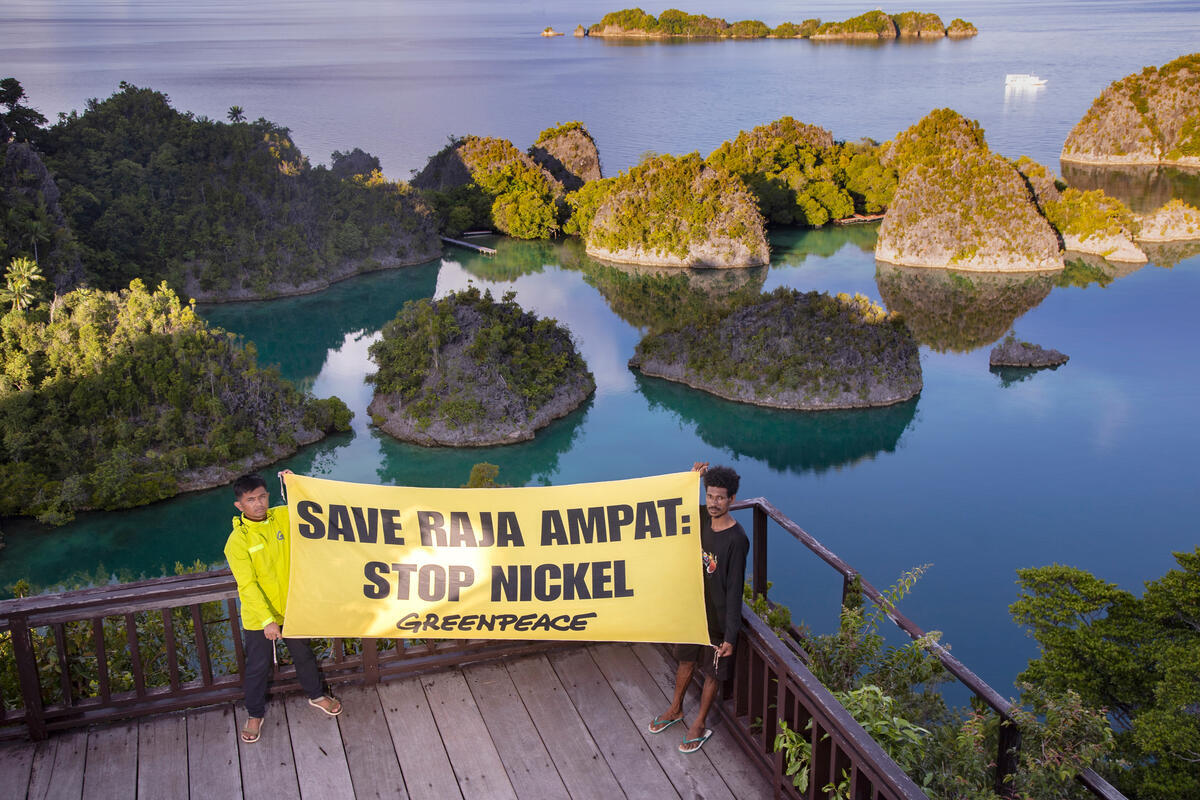
3. World’s highest court delivers historic protections for climate-impacted communities
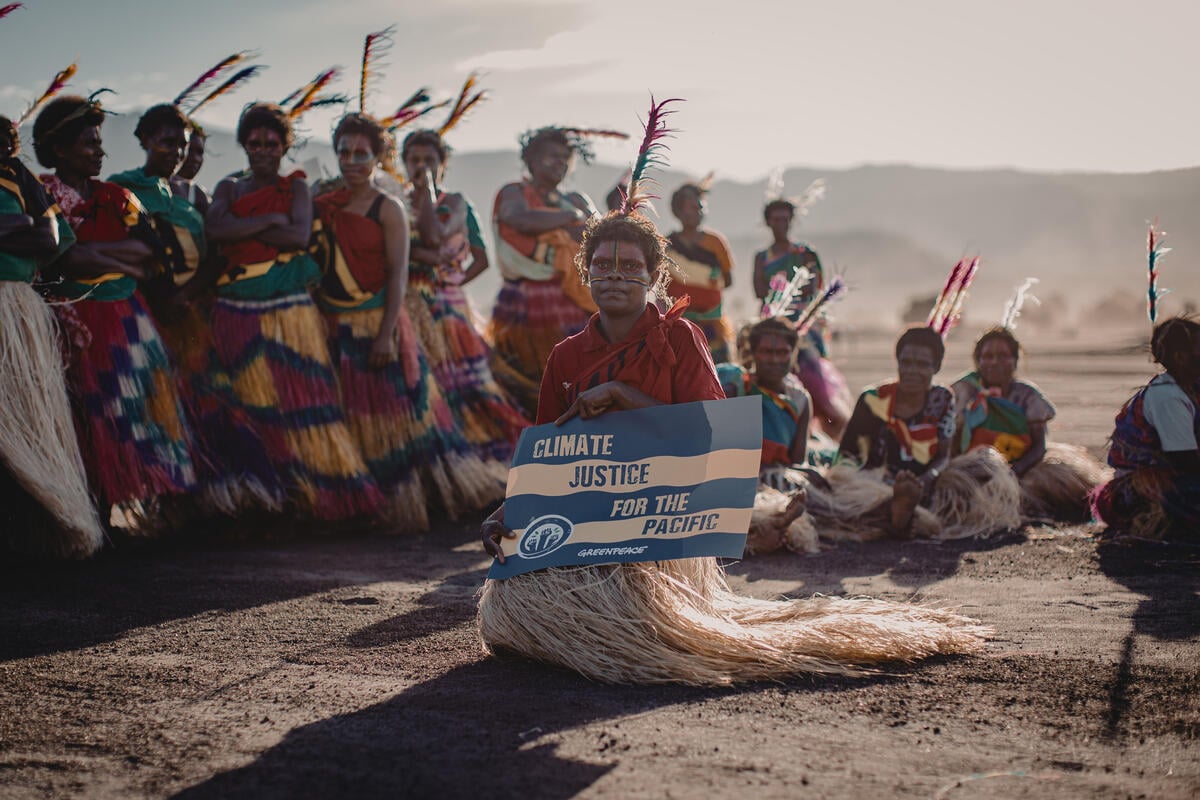
4. Landmark trial on greenwashing holds oil and gas corporation to account

5. A huge step towards seed sovereignty in Kenya
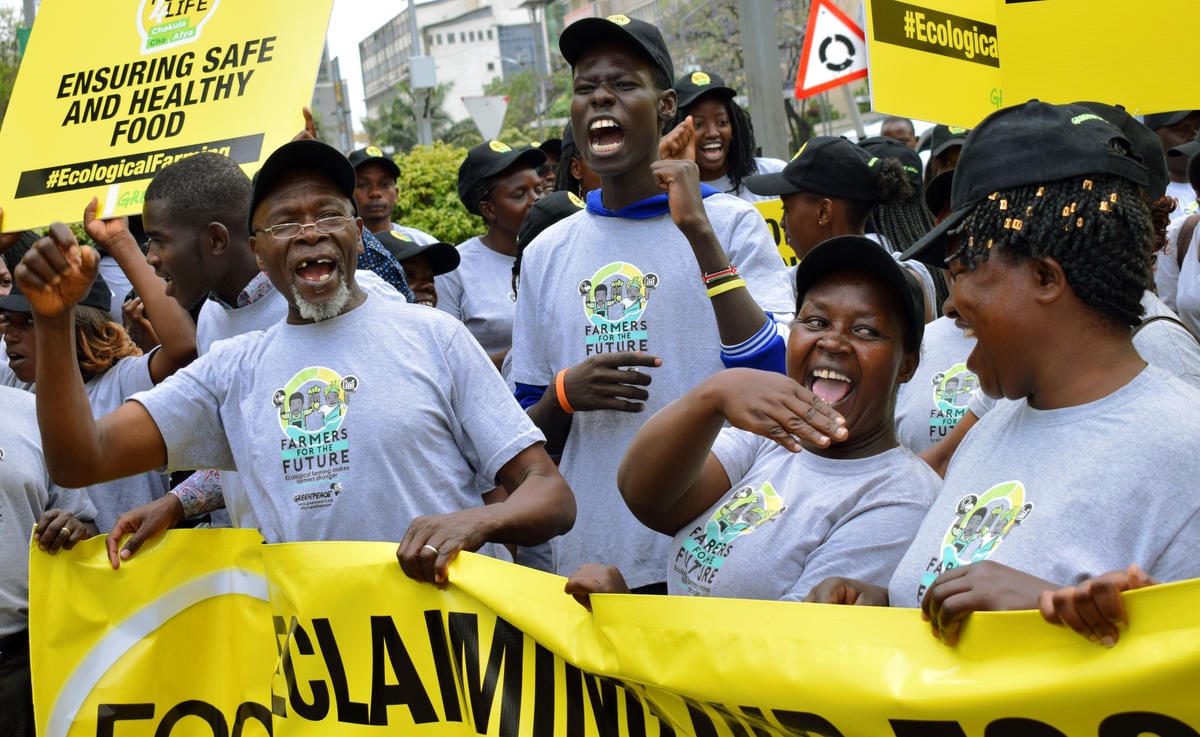
6. Banco do Brasil moves: An end to public financing of Amazon destruction

7. Youth and environmentalists hold Norway to account on oil exploration

8. The end of new oil and gas exploration in the UK
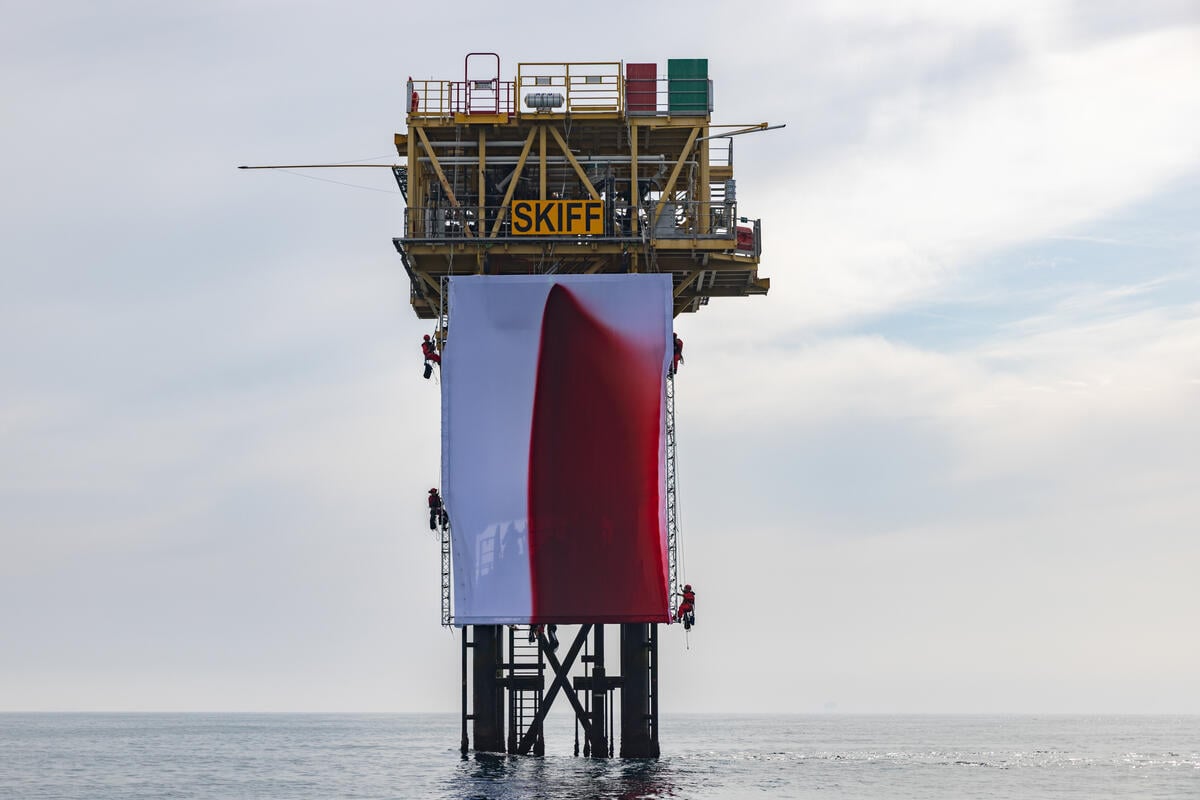
But wait, there’s more…

Bon Pote
Actu-Environnement
Amis de la Terre
Aspas
Biodiversité-sous-nos-pieds
Bloom
Canopée
Décroissance (la)
Deep Green Resistance
Déroute des routes
Faîte et Racines
Fracas
F.N.E (AURA)
Greenpeace Fr
JNE
La Relève et la Peste
La Terre
Le Lierre
Le Sauvage
Low-Tech Mag.
Motus & Langue pendue
Mountain Wilderness
Negawatt
Observatoire de l'Anthropocène

 (@greenpeace)
(@greenpeace)